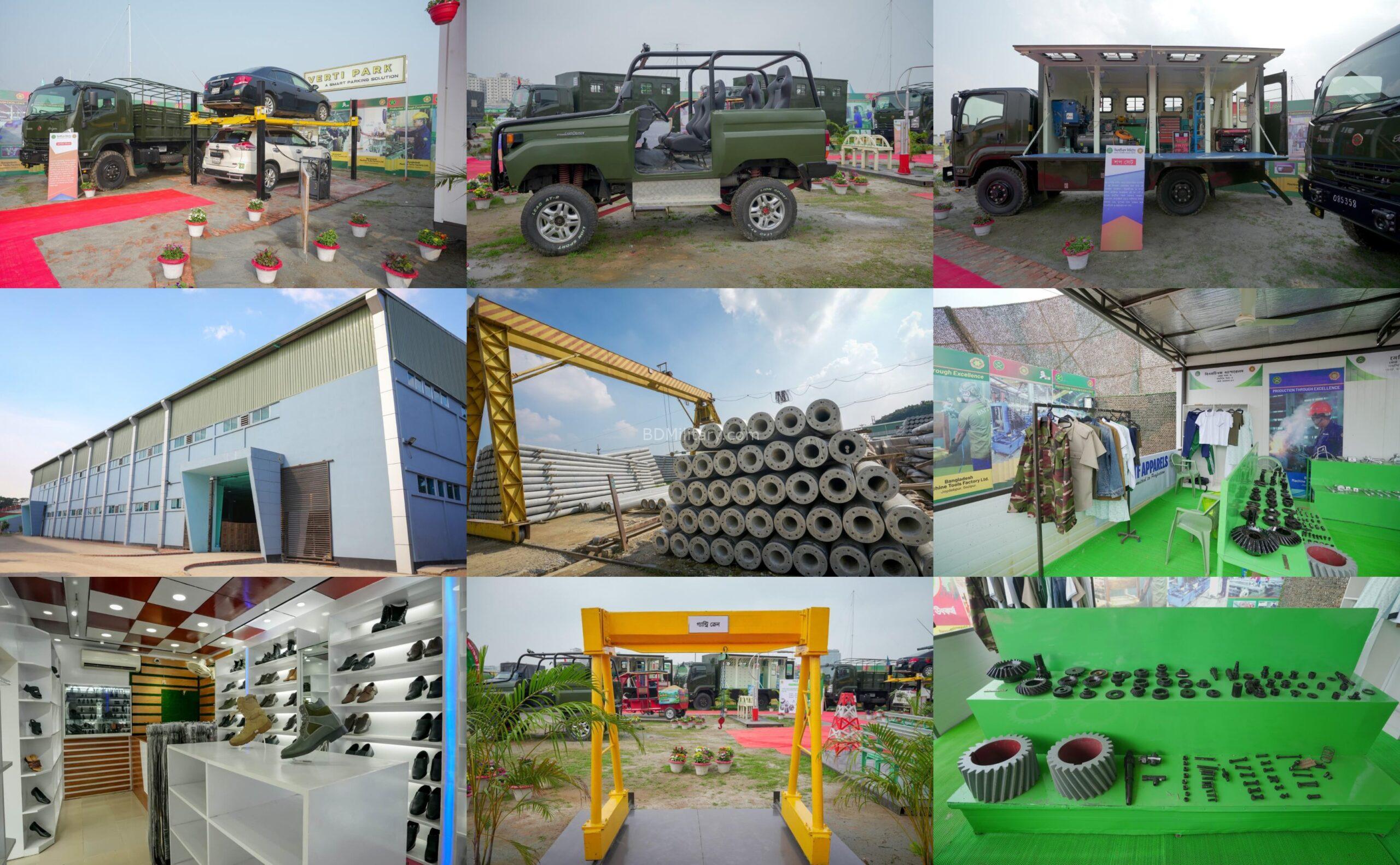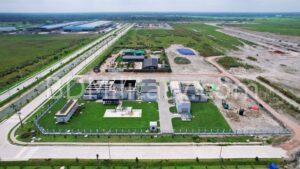The Bangladesh Machine Tools Factory (BMTF), established in 1979 and operated under the management of the Bangladesh Army, represents a critical but underutilised component of Bangladesh’s industrial landscape. Spread across 156 acres in Gazipur and encompassing 19 factories, BMTF has historically concentrated on civilian production and limited support items for security services. Importantly, the factory does not manufacture weapons. While these contributions are valuable, the facility’s current operations do not fully leverage its potential to support Bangladesh’s national defence infrastructure.
In an era where modern military operations increasingly depend on mobility, surveillance, situational awareness, and engineering support, BMTF has a unique opportunity to pivot toward defence-support manufacturing. Such a strategy focuses on producing high-value, non-lethal systems: night-vision and thermal optics, tactical communications equipment, commercial-grade surveillance systems, several classes of military vehicles, and combat-engineer equipment such as pontoon bridges and recovery vehicles. Aligning BMTF’s operations with these strategic priorities would enhance the operational capabilities of Bangladesh’s armed forces, foster industrial self-reliance, and create a foundation for long-term technological growth.
Current Capabilities and Limitations
BMTF possesses a well-established infrastructure capable of complex manufacturing. Its factories specialise in precision machining, welding, assembly, and electronics integration. The workforce includes engineers and skilled technicians capable of high-precision assembly processes, providing the factory with the ability to undertake sophisticated defence-support projects. These strengths form a strong foundation for a strategic pivot toward the defence sector.
However, the factory’s capabilities remain underutilised for strategic defence purposes. Civilian production dominates, and research and development (R&D) efforts have historically targeted incremental improvements for existing products rather than innovation in defence applications. Additionally, the factory has limited experience with advanced optics, tactical communications, integrated surveillance systems, and specialised military vehicle platforms. Partnerships with international technology providers have been minimal, reducing access to state-of-the-art know-how. Addressing these gaps is essential to enable BMTF to evolve into a credible defence-support industrial hub.
SWOT Analysis
BMTF’s potential can be summarised through a SWOT analysis. The factory’s strengths include its expansive infrastructure, versatile production capabilities, and institutional backing from the Bangladesh Army, all of which provide stability and operational support. Additionally, BMTF’s workforce possesses core skills in machining, welding, and electronics, enabling rapid adaptation to new production lines. Its weaknesses centre on a historical emphasis on civilian products, limited defence-oriented R&D, and a lack of specialised expertise in optics, communications, and vehicle systems. Opportunities include growing national defence requirements, the potential for joint ventures with technologically advanced international partners, and dual-use civilian markets that can financially support production. Threats encompass dependence on foreign technology providers, gaps in quality and certification, competition from regional defence-industrial actors, and the risk of bureaucratic or regulatory delays in implementing new programmes. Together, this SWOT analysis underscores both the latent potential and the challenges BMTF must address to play a meaningful role in Bangladesh’s defence-support industrial apparatus.
Strategic Focus: Defence-Support Systems
A modern defence-industrial strategy for BMTF should prioritise systems that enhance operational capability without entering the complexities of weapons manufacturing. The focus areas include:
Defence Optics: Night-vision and thermal systems are essential for modern military operations, providing personnel with enhanced capabilities in low-light or adverse conditions. BMTF could produce monoculars, binoculars, and vehicle-mounted thermal cameras in collaboration with international technology partners. Production would require precision lens assembly, optical coatings, calibration laboratories, and quality assurance protocols to ensure operational reliability.
Tactical Communications Equipment: Secure tactical communications are critical for command, control, and coordination. BMTF can develop vehicle-mounted radios, mobile repeaters, field routers, and ruggedised computing devices. Partnering with experienced firms for software-defined radios and secure firmware integration would enable the factory to produce systems suitable for military standards while leveraging existing electronics assembly expertise.
Commercial-Grade Surveillance Systems: Surveillance technology, including fixed CCTV, PTZ cameras, and mobile surveillance trailers, has dual-use potential. Producing ruggedised surveillance platforms, integrating video analytics, and developing portable control centres allows BMTF to support border security, disaster management, and urban surveillance while generating civilian revenue streams.
Military Vehicles (Non-Lethal Classes): BMTF can manufacture troop carriers, ambulances, command and control vehicles, and recovery vehicles. Production would focus on chassis construction, driveline integration, specialised body assembly, and rigorous quality testing. By delivering non-lethal platforms, the factory enhances the operational mobility and resilience of Bangladesh’s armed forces without contravening legal or regulatory restrictions.
Combat Engineer Equipment: Combat engineer units require specialised tools for bridging, obstacle clearing, and mobility support. BMTF could manufacture modular pontoon bridges, assault bridges, earth-moving attachments, and field cranes. These systems require precise engineering, hydrodynamic testing, and load-bearing certification—areas compatible with BMTF’s existing industrial capabilities.
Joint Ventures for Technology Transfer
To accelerate capability development and ensure adherence to international quality standards, BMTF should pursue strategic joint ventures with global defence-industrial firms. Key potential partners include Türkiye, China, Japan, and Italy. Türkiye provides expertise in wheeled armoured vehicles, combat engineer equipment, and C4I integration, enabling rapid transfer of vehicle and bridging technology. China offers large-scale production experience in thermal optics, electronics, and vehicle platforms, supporting cost-effective mass production. Japan contributes high-quality electronics and precision manufacturing, particularly for tactical communications and surveillance systems, while Italy brings advanced optics, specialised vehicle bodywork, and niche engineering experience in bridging and sub-systems. Each joint venture should prioritise technology transfer, workforce training, and local value addition, gradually building BMTF’s indigenous capacity.
Organisational and Governance Measures
Successfully pivoting BMTF toward defence-support manufacturing will require structural and governance reforms. A dedicated Defence Production Division should oversee all defence-support projects, coordinate joint ventures, and manage R&D and production activities. Simultaneously, a Quality and Certification Cell must ensure compliance with ISO 9001 and AS9100 standards for optics, electronics, and vehicle systems, with the creation of test laboratories for optics, RF communications, and mechanical stress evaluation. Workforce development is crucial, focusing on skills in optics assembly, electronics integration, embedded software, vehicle systems, and precision welding. Exchange programmes with international partners can accelerate skill acquisition and ensure best practices. Additionally, the establishment of a modest R&D hub, in collaboration with universities and technical institutes, will facilitate prototyping and iterative development of new defence-support products.
Phased Implementation
Implementation should occur in clearly defined phases. During the initial 18 months, BMTF should establish the Defence Production Division and quality/certification units, conduct capability audits, define detailed product specifications, and formalise joint venture agreements for optics, vehicles, and communications. The second phase, spanning 18 to 48 months, should focus on pilot production of sub-systems such as vehicle cabins, optics modules, and communication racks, with field testing by the Bangladesh Army to validate operational performance. Workforce training should continue concurrently, and the first batch of products should achieve military acceptance standards. In the third phase, between 48 and 96 months, production should scale, local content should increase, the portfolio should diversify to include bridging and recovery vehicles, and long-term supply chains should be established. Limited regional exports under government oversight can be initiated to demonstrate credibility and generate revenue for reinvestment.
Risk Management
Several risks must be addressed to ensure successful implementation. Dependence on international partners for technology can be mitigated by diversifying joint ventures and establishing clear milestones for technology transfer. Quality and certification risks can be managed through early investment in workforce training, quality management systems, and international certification procedures. Potential procurement or production delays should be handled using modular development strategies and phased production planning to maintain project momentum. Finally, regulatory compliance must be ensured by aligning BMTF operations with national export controls and industrial policy while ensuring that all joint ventures comply with international licensing requirements.
Strategic and Operational Benefits
A strategic pivot toward defence-support manufacturing provides multiple benefits. Production of night-vision optics, thermal devices, and secure communications enhances the operational capabilities of Bangladesh’s armed forces. Developing indigenous manufacturing capacity reduces reliance on imports and strengthens national industrial self-reliance. Dual-use production ensures financial sustainability through civilian markets in border security, police operations, and disaster management. Workforce development in optics, electronics, and vehicle integration creates high-value technical expertise. International partnerships introduce global quality standards and best practices, fostering long-term industrial growth. Collectively, these measures position BMTF as a credible, sovereign provider of critical defence-support systems, capable of delivering tangible operational impact while generating economic and technological benefits.
Conclusion
The Bangladesh Machine Tools Factory is uniquely positioned to serve as the cornerstone of Bangladesh’s defence-support industrial base. By focusing on high-impact, non-lethal systems—optics, communications, surveillance, vehicles, and combat-engineer equipment—and leveraging joint ventures with Türkiye, China, Japan, and Italy, BMTF can significantly expand its strategic contribution. This approach respects legal constraints, avoids weapons manufacturing, and builds long-term industrial self-reliance. Through phased implementation, structural reforms, workforce development, and international collaboration, BMTF can transform into a modern, capable defence-support manufacturer. Within a decade, it has the potential to emerge as a strategic linchpin of Bangladesh’s defence-industrial ecosystem, delivering operational advantages, economic value, and technological capability.

M.Z. Rahman is a distinguished defence and aerospace industry veteran turned strategist, with over two decades of experience in regional security, military modernisation, and strategic policy. Holding a Master of Arts in International Relations and Security Studies from Waikato University, New Zealand, he has contributed extensively to leading think tanks and defence journals worldwide. As Chief Editor of BDMilitary, Rahman drives the editorial vision, delivering authoritative, rigorously researched insights that reflect the latest trends in defence and geopolitics. His work integrates industry expertise with strategic foresight, establishing him as a respected voice in global defence strategy.


